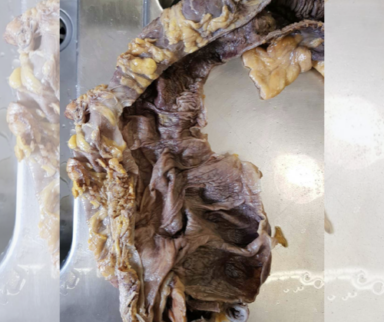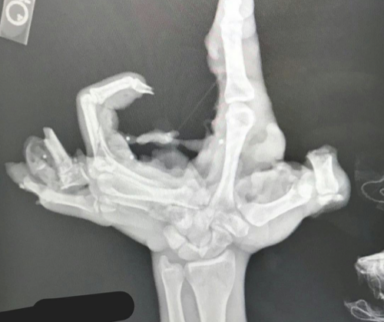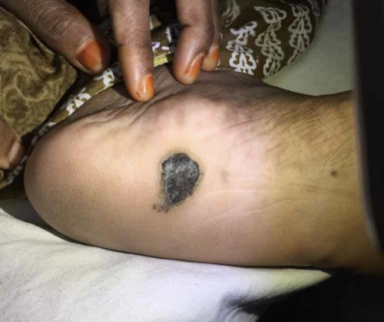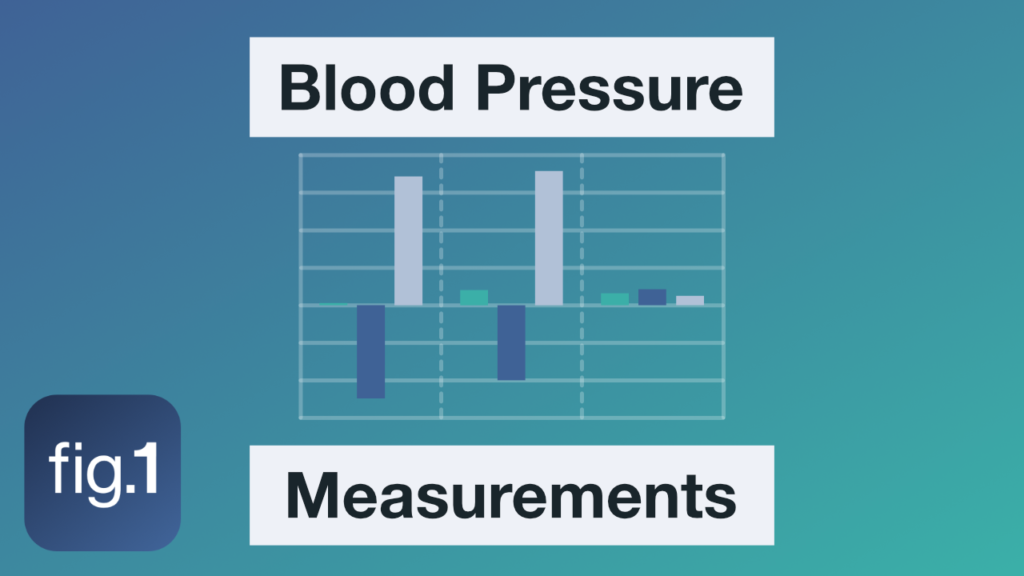
Auscultation vs. Oscillometric
Healthcare students are often taught the old-school way of measuring blood pressure: auscultation. You grab a stethoscope and a blood pressure cuff, and listen for the Korotkoff sounds. You were probably also told that auscultation is more accurate at getting a true blood pressure than the oscillometric method — the automatic blood pressure machines mounted to the wall or on mobile carts.
But the moment you start working in the healthcare field, everyone just uses the automatic, oscillometric, machines. They’re faster, easier, and good enough. You’ve been told they’re probably slightly off, but not enough to change your clinical judgment. And if you get a weird number, you’ll just run the blood pressure machine a few more times, maybe on another arm, and assume the real number is probably somewhere in the middle of all those numbers.
But how accurate are automatic blood pressure machines, really?
Comparing Pediatric Blood Pressure Methods
One study measured the difference between arterial line and oscillometric blood pressure readings in children. Let’s compare their systolic blood pressure readings. The oscillometric blood pressures are consistently below zero, meaning they’re showing a higher number than the true systolic blood pressure, except at very low and very high blood pressures.
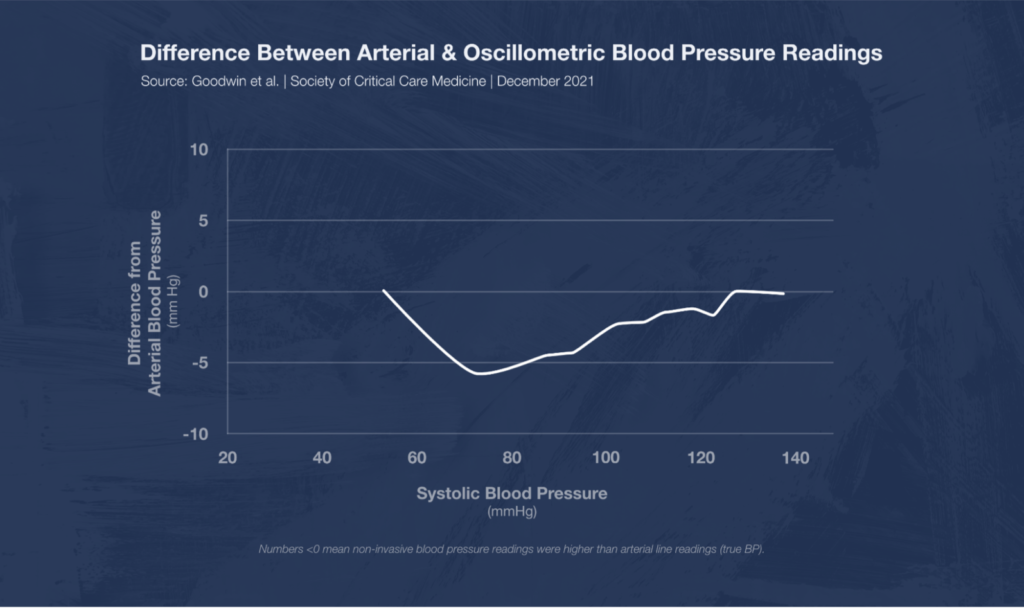
Okay, let’s look at mean arterial pressure now. Here, oscillometric blood pressure is consistently above zero, although not by much. That means it’s showing a slightly lower number than the true blood pressure.
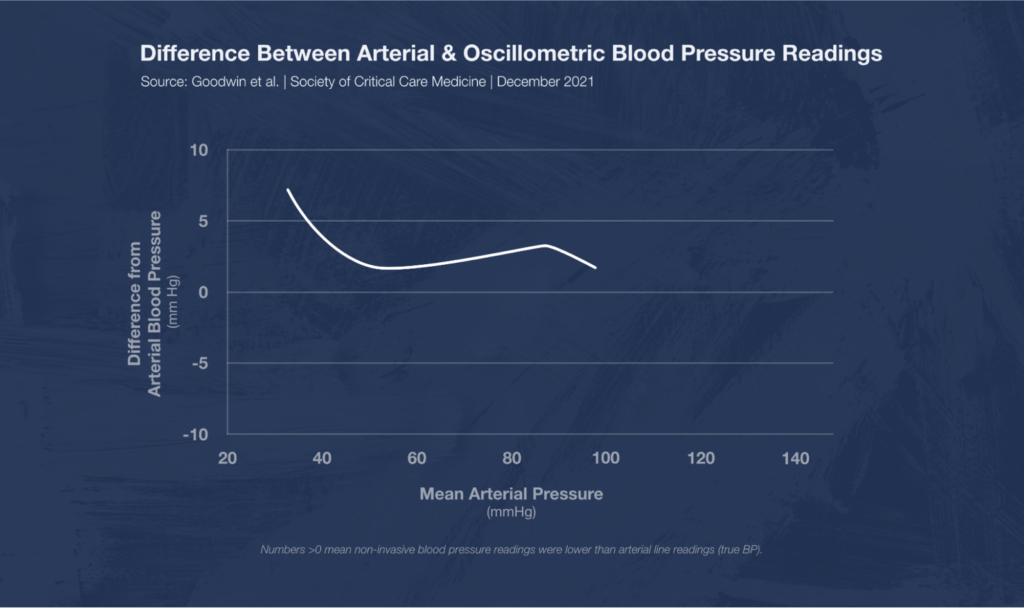
Below is the same graph, but measuring diastolic blood pressure. This is all over the place. At low blood pressures, oscillometric readings are almost 10 mmHg lower than the actual blood pressure. And at higher blood pressures, oscillometric readings are nearly 10 mmHg higher than the actual blood pressure. That’s a huge difference!
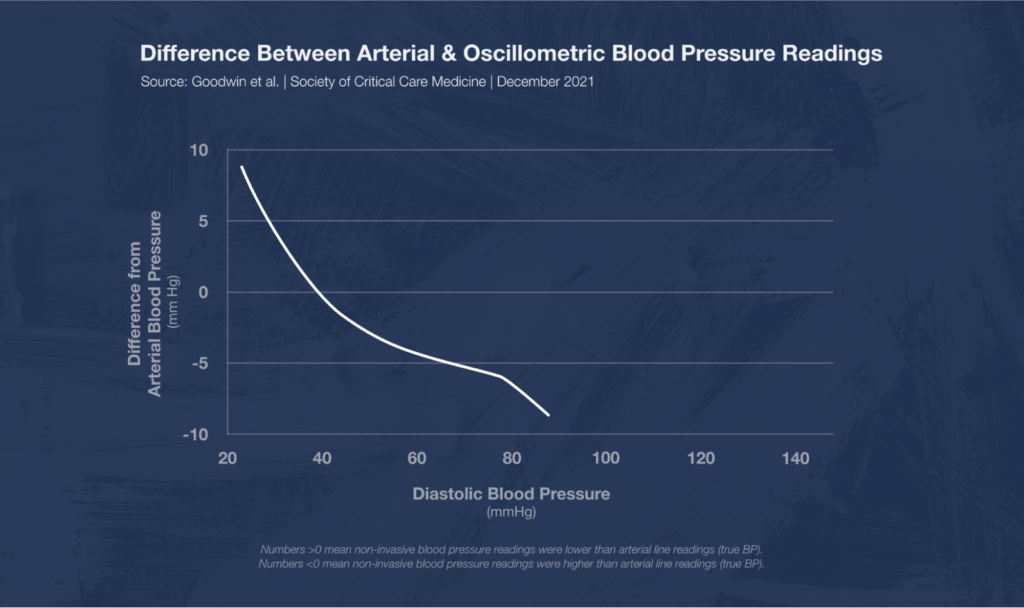
So, oscillometric pediatric blood pressures are reasonably accurate at measuring mean arterial pressure, but they’re off when measuring systolic, and really off when measuring diastolic pressures.
Maybe this was just a one-off finding in this study? Let’s look at another one.
Comparing Pediatric Blood Pressure Methods
Here, pediatric systolic blood pressures were measured using three different methods: auscultation, oscillometric, and arterial lines. When we compare oscillometric measurements against an arterial line in normotensive patients, we can see they’re actually pretty close. Oscillometric readings were only about half a mmHg above arterial line readings. When we compare oscillometric against auscultation we can see oscillometric readings were about 1.5 mmHg higher than auscultation readings. And when we compare an arterial line reading against auscultation, we see almost the same thing, the arterial line reads about 1.5 mmHg higher than auscultation. Overall, not bad, although one interesting takeaway here is that oscillometric readings appear to be more accurate than auscultation in these specific patients.
But, what about hypertensive patients? Well, in these patients oscillometric readings were 10 mmHg lower than the arterial line, and oscillometric readings were 8 mmHg lower than auscultation readings. That’s a huge difference!
Is this any better for hypotensive patients? No! It’s actually much worse. Both oscillometric readings were almost 14 mmHg higher than the arterial line and auscultatory readings. That’s … not good.
This can be really harmful to patients. If we are getting numbers that are exceptionally lower or higher than they really are, we’re not going to treat them correctly.
So in summary, it seems the automatic blood pressure machines are pretty accurate in patients with typical blood pressures. But they’re inaccurate when someone is hypertensive and hypotensive.
Comparing Pediatric Blood Pressure Methods
In our video on pediatric blood pressure, we showed that several guidelines are not aligned with blood pressure data that captures a patient’s height. In this video we also saw that those same blood pressure guidelines are not aligned with each other either.
When we put this all together, it starts to paint a pretty frightening picture.
But, there are even more issues to discuss. Those pediatric blood pressure guidelines discussed in the above video are all based on auscultatory blood pressure measurements, not oscillometric. So, when we take someone’s blood pressure using an automatic blood pressure machine and compare it to the guidelines, we are comparing apples to oranges. We are not comparing our patients numbers to the right scale; the guidelines were not made using oscillometric data. As we now know, oscillometric data can vary quite a bit from auscultatory data.
Now if you’re like me, you’re probably thinking, “Oh boy, I’ve totally used oscillometric blood pressures with the guidelines.” If you haven’t thrown your hands up in distress yet, hold on, there’s still more.
Each oscillometric blood pressure manufacturer uses their own proprietary algorithm for calculating blood pressure. So, blood pressure measurements may be different between machines made by different companies. Not only are there differences between machines, but blood pressure machines need to be recalibrated every six months.
Now, perhaps I was oblivious to this in my clinical experiences. But, I can’t recall seeing anyone ever recalibrate a blood pressure machine. I am not saying clinics and hospitals do not recalibrate their equipment. However, there is opportunity for this important maintenance to be missed if it is not prioritized. This adds yet another layer of potential inaccuracy to pediatric blood pressure measurements.
So in summary, taking blood pressures through auscultation is way more accurate than using an automatic blood pressure machine, when a patient is hypertensive and hypotensive. That, and we probably shouldn’t compare pediatric blood pressure guidelines oscillometric data.
What do you think about all this? Will any of this change your clinical practice? As for me, I might start using the auscultatory method a bit more often with my more critically ill patients.

By Kyle Slinn, RN, BScN, MEd
Registered Nurse
Published September 12, 2022
Join the Conversation
Sign up for Figure 1 and be part of a global community of healthcare professionals gaining medical knowledge, securely sharing real patient cases, and improving outcomes.
